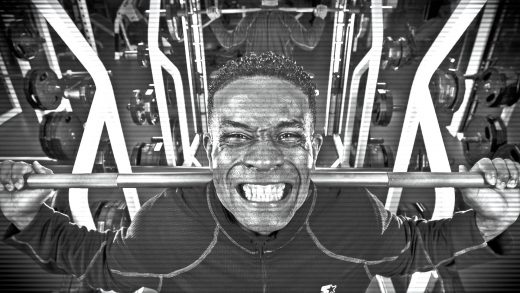Are we too afraid for big weights? Do you load enough? As a physiotherapist we might be too careful to load a patient with heavy weights or too late. As a personal trainer, do you really load your clients enough for the results you are promising, or are you entertaining your clients with the standard 3×10 sets and repetitions?
goals
It does not matter if you are a physiotherapist or a personal trainer. Both set goals to achieve, while rehabilitating or training. If you do not have a goal, how can you work towards something? There can be of course more than one goal in one session. But I get the feeling that some trainers/ physics are doing exercises for the purpose of moving.
If the goal is to increase strength we better make sure we are training in fact strength. For bigger muscles, we need to train hypertrophy. Coordination, we need to train coordination etc. These different goals, have different parameters.
Repetition ranges (rep ranges)
In a later blog i will zoom in on the different types of strength training and their parameters. But for now let’s say we want our throwing athlete that suffered a shoulder injury to increase strength. We want to build up towards maximal strength and made sure the athlete as the proper form and technique in order to perform the lift correctly.
We are periodizing the strength training and let’s say we are now in the 8-10 rep ranges. So we want 4 sets where the weight is such the athlete can reach no less than 8, but no more than 10 repetitions. We want the weight to be such, that the exercise cannot be performed 12 or even 15 times. The weight should dictate the number of repetitions not the other way around.
Later on in our rehab or training, we might do an exercise we perform 4 sets of 5 repetitions. Here the weight should be such, our patient/ client can only perform 5 repetitions. Especially in higher repetition ranges I feel many people are training underloaded. Your goal that we have set at the beginning, will not be reached this way.
In other words, we are moving, but not training.
But what if the patient experiences pain?
Patients often experience pain. That is the reason they come to you.

“I feel pain during performing my beloved sport and i need you to make the pain go away” is what they will tell you.
Our solution in this blog is to increase the strength (loadbility of the tissue). But what if doing strength training is painful? Does it more harm than good? or should we be moving within pain limits? Do we even call it strength training?
Too early in the recovery
After surgery or a strain/ tear, the tissue might not be sufficiently healed yet. It is too early to load the tissue with strength training. In this stage we might do exercises, but it is not to increase strength. We do exercises within the limits of the tissues capability while in their healing process.
It is important to do so, since there is more and more evidence that shows early loading of the tissue has benefits towards an earlier return to play time. In these stages we might be improving range of motion, improving joint sense, improving motor control, thick fibre stimulation, central nervous training or other important goals. While all of the above are important and might be part of the benefits of strength training, it is not in fact strength training. Here we want to load the patient, with load that is tolerable. The weights that we pick for the exercises is chosen by the pain tolerance rather than if the patient has the strength to complete the set.
Adapting the exercise
Sometimes the way the exercise is performed, is not done properly. So it just takes a simple correction of the exercise to let somebody experience less or even no pain during an exercise. This might be due to decreasing the range of motion, change the bio- mechanical load (spanish squat) or technical improvement. When the patient can move pain free within a certain range of motion, we can still apply the parameters for our strength training within that range of motion. Over time, we want to increase to full range of motion within the exercise. This can be especially helpful in rehabbing tendon injuries/ tendinopathy.
Chronic pain
Pain is not that important. Yes you read it correctly. Pain is not always a good indicator something is “wrong”. While your acute patients have “warning pain” a delta neurons, or pain from damaged tissue, c neurons. People with chronic pain (>3 months) pain sensation is not always from damaged tissue or from “warning pain”. In these patients we don’t want to focus on their VAS- scale or NPRS during exercise all the time. As long as the pain remains bearable and recovers after our session we do not focus on their pain, but rather about their functionality. In the weeks or in some patients months, we want to see either an increase in function, decrease in pain, or both. If this is not true, your training might not be beneficial for your patient.
Disclaimer:
If you are reading this as a non-physio, please don’t take the above paragraph as advise for your clients. And for physio’s, always be sure in what you are doing. If your patient has pain, you better have ruled out serious pathology. Always know what you are doing.
In conclusion:
Like in my previous post on PICKING THE CORRECT EXERCISE, it all depends on what is my goal with the particular exercise. What do i want to accomplish. We have small term goals and long term goals. Today’s treatment/ training is always part of a bigger plan. If i want to be able to perform strength training, but my patient is not able yet, my exercises have a different goal than when i want to increase strength training. But in both cases i want to do as much as tolerable. Wether the pain dictates the maximum weight or the strength of the patient, i ask you, do you load enough?




